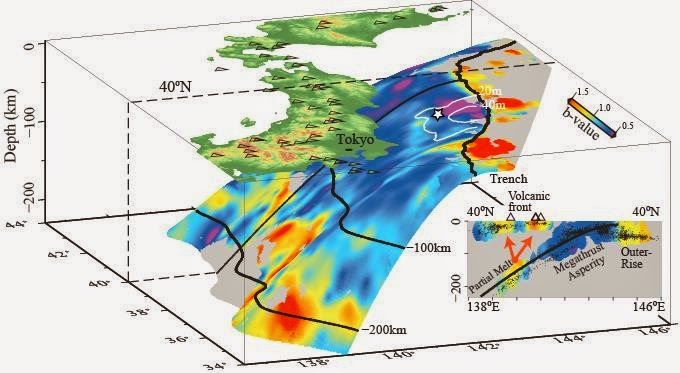
Associate Professor Bogdan Enescu, Faculty of Life and Environmental Sciences, University of Tsukuba, collaborated with colleagues at the Swiss Federal Institute of Technology in Zurich (ETH Zurich), to show that the stress recovery following the 2011 M9.0 Tohoku-oki earthquake has been significantly faster than previously anticipated; specifically, the stress-state at the plate interface returned within just a few years to levels observed before the megathrust event. In addition, since there is no observable spatial difference in the stress state along the megathrust zone, it is difficult to predict the location and extent of future large ruptures.
Constraining the recurrence of megathrust earthquakes is genuinely important for hazard assessment and mitigation. The prevailing approach to model such events worldwide relies on the segmentation of the subduction zone and quasi-periodic recurrence due to constant tectonic loading. The researchers analyzed earthquakes recorded along a 1,000-km-long section of the subducting Pacific Plate beneath Japan since 1998 to map the relative frequency of small to large earthquakes (the so-called “b-value” parameter — which on average is close to 1.0), in both space and time. Evidence from laboratory experiments, numerical modeling and natural seismicity indicates that the b-value is negatively correlated with the differential stress. The present analysis reveals that the spatial distribution of b-values reflects well the tectonic processes accompanying plate motion. However, there is no evidence of distinct earthquake-generation regions along the megathrust, associated with the so-called “characteristic earthquakes.”
Nevertheless, the authors show that parts of the plate interface that ruptured during the 2011 Tohoku-oki earthquake were highly stressed in the years leading up to the earthquake, as expressed by mapped, very low regional b-values. Although the stress was largely released during the 2011 rupture, thus leading to an increase in b-values immediately after the megathrust event, the stress levels (i.e., b-values) quickly recovered to pre-megaquake levels within just a few years. This suggests that the megathrust zone is likely ready for large earthquakes any time with a low but on average constant probability.
The study concludes that large earthquakes may not have a characteristic location, size or recurrence interval, and might therefore occur more randomly distributed in time. The authors bring also strong evidence that the size distribution of earthquakes is sensitive to stress variations and its careful monitoring can improve the seismic hazard assessment of the megathrust zone.
Reference:
Thessa Tormann, Bogdan Enescu, Jochen Woessner, Stefan Wiemer. Randomness of megathrust earthquakes implied by rapid stress recovery after the Japan earthquake. Nature Geoscience, 2015; 8 (2): 152 DOI: 10.1038/ngeo2343
Note : The above story is based on materials provided by University of Tsukuba.










